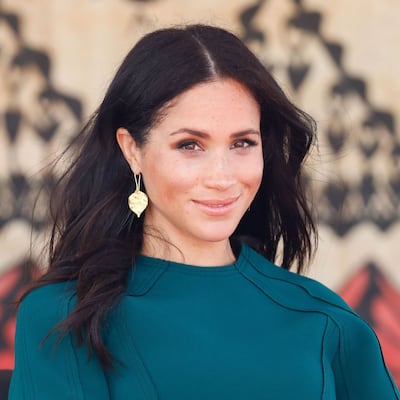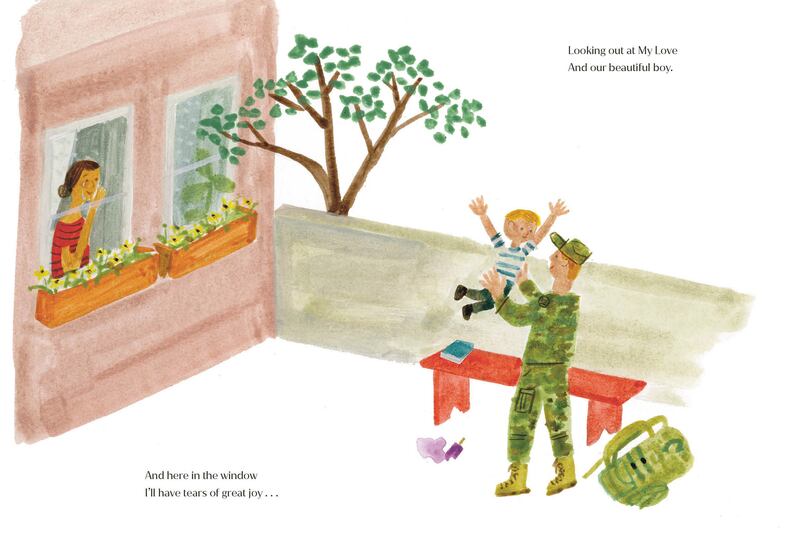
My first job was at a children’s publishing company that specialised in picture books. Famous ones. About going on bear hunts, and wondering where Wally was, and a little bear who couldn’t sleep. When one author came in to see my editor, and wanted to try out a picture-book idea, I was roped in from the adjoining desk to type the text as he read out lines for the story he had written on the journey to London. It was the draft of Owl Babies, about Sarah and Percy and Bill, a book that became a modern classic.
I learned a lot during that time, working with authors and illustrators. Most of the books I worked on had probably fewer than 150 words. The magic of a classic picture book is the spark that ignites between its deceptively simple text and the accompanying illustrations. These are books you could not imagine having different words or drawings – they are pages children never tire of.
The Bench, by Meghan Markle – aka the duchess of Sussex – with illustrations by Christian Robinson, has 169 words. It's the right length. The pages of this hardback book are nicely large. There is a cute surprise when you remove the jacket: the cover underneath resembles wood – as in the bench of the title – and has "H + A" carved into it. That would be Meghan's husband, Harry, and son, Archie, for those who may need reminding.

I read this book with a critical eye honed at the publishing company that produced modern classics. Around the time I worked there, another duchess published a children's book. Sarah Ferguson, the duchess of York, published Budgie: The Little Helicopter. It turned out to be the first of a series of books, and also became a TV series. That it had me and my colleagues in hysterics at how appallingly written it was, and how poor the illustrations were, made no difference to its undeserved success. A star name sells books.
Christian Robinson’s watercolour illustrations for The Bench are very lovely. They depict various fathers and sons – one pair are in tutus, for example; another snuggle after a bad day. The endpapers show an array of benches; there is bound to be one we can each recognise as being from our own surroundings. The fathers and sons represent different races and cultures.

Harry is there too, with his red hair and beard. Meghan turns up towards the end, a baby in a sling. (That newly born daughter, we now know, is called Lilibet "Lili" Diana Mountbatten-Windsor, which is a whole other story.)
There are sweet dogs any child would want to pet, and some random chickens. The illustrations as a series are a bit disjointed, but that is because those 169 words are extremely disjointed.
The one job the text in a children's book needs to do is to tell a story. There is no story in The Bench. Nothing happens. It is a long list of disparate statements.
"He'll learn to ride a bike
As you watch on with pride."
And
"You'll love him.
You'll listen.
You'll be his supporter."
And so on.
There is none of the consistency a picture book needs to have, so that the child is clear about who is who. On one page the father figure is called "papa". On another page he's suddenly "daddy". That's confusing for a child. Names of characters need to stay the same throughout the very few words in a picture book.
Picture books should help children to read, and use the words they hear around them, not put things back to front in a poor effort at forcing a nonexistent rhyme
The worst crimes of all are contorted lines that don't scan and rhymes that don't rhyme.
"He'll feel happiness, sorrow
One day be heartbroken.
You'll tell him 'I love you'
Those words always spoken."
Those words always spoken? Who speaks like that? Nobody does. Simple stories for children should not butcher a language they are trying to learn. Picture books should help children to read, and use the words they hear around them, not put things back to front in a poor effort at forcing a nonexistent rhyme.
Endings in picture books are incredibly important. They wrap up the story. They reassure. Sometimes they amuse. Ideally, they make a child want to read the story again, or have it read to them. This is the ending of The Bench, spread over no fewer than six pages, with two sets of ellipses:
"Right there on your bench
The place you'll call home…
With daddy and son…
Where you'll never be 'lone."
Where you'll never be 'lone? Does Meghan mean "alone"? Why change the word? It's not even as if chopping off a character makes some awful rhyme. It does nothing. The book ends with a word that isn't a proper word, which I guess is kind of fitting, as it's not a proper picture book.
Meghan Markle apparently wrote some version of these 169 words as a private message to her husband after the birth of their son. That is a lovely sentiment, and that is also where the words should have stayed: private. She has a famous name, and that must be the sole reason Puffin took on this book. What can it all be about but money, and hoping the book will sell by the benchload? Any publishing house would have made the same decision to take on Meghan Markle, and it’s naive to imagine otherwise.
It’s just a terrible shame The Bench is quite so awful. Because I am sure of one thing: Lilibet “Lili” Diana will most certainly be the subject of another book in due course. Which will be equally bad.









